-
 Bitcoin
Bitcoin $83,649.7703
-1.06% -
 Ethereum
Ethereum $1,818.4708
-2.72% -
 Tether USDt
Tether USDt $1.0000
0.01% -
 XRP
XRP $2.0495
-3.21% -
 BNB
BNB $597.8591
-1.20% -
 Solana
Solana $118.6021
-5.26% -
 USDC
USDC $1.0000
0.01% -
 Dogecoin
Dogecoin $0.1642
-3.52% -
 Cardano
Cardano $0.6526
-2.99% -
 TRON
TRON $0.2343
-0.56% -
 Toncoin
Toncoin $3.7346
-7.00% -
 UNUS SED LEO
UNUS SED LEO $9.4260
0.63% -
 Chainlink
Chainlink $12.9796
-3.63% -
 Stellar
Stellar $0.2617
-1.79% -
 Avalanche
Avalanche $18.3920
-4.15% -
 Sui
Sui $2.3105
-2.61% -
 Shiba Inu
Shiba Inu $0.0...01222
-0.74% -
 Hedera
Hedera $0.1630
-1.67% -
 Litecoin
Litecoin $83.6143
1.85% -
 Polkadot
Polkadot $4.0068
-2.05% -
 MANTRA
MANTRA $6.3564
2.37% -
 Bitcoin Cash
Bitcoin Cash $306.7380
0.76% -
 Bitget Token
Bitget Token $4.5736
-0.36% -
 Dai
Dai $1.0001
0.01% -
 Ethena USDe
Ethena USDe $0.9998
0.00% -
 Pi
Pi $0.6284
-6.81% -
 Hyperliquid
Hyperliquid $11.9330
-10.11% -
 Monero
Monero $213.7810
-0.49% -
 Uniswap
Uniswap $5.9757
-2.02% -
 Aptos
Aptos $5.2294
-1.01%
Is USDT's audit report credible?
USDT's audit credibility is debated due to historical controversies, choice of auditors, and the use of attestations rather than full audits, impacting market trust.
Apr 02, 2025 at 03:00 pm
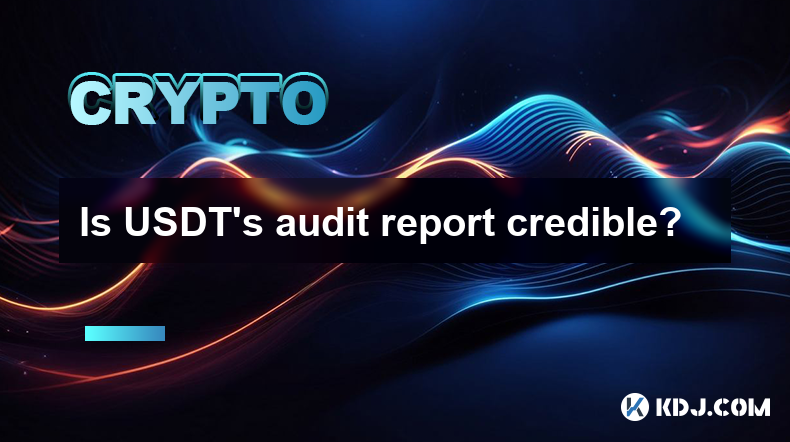
The credibility of USDT's audit report is a topic of significant interest and debate within the cryptocurrency community. USDT, or Tether, is a stablecoin that claims to be backed 1:1 by traditional fiat currencies, primarily the US dollar. The company behind USDT, Tether Limited, periodically releases audit reports to assure users of its solvency and the backing of its tokens. However, the credibility of these reports has been questioned due to various reasons, including the choice of auditors, the transparency of the audit process, and the historical controversies surrounding Tether's operations.
The audit reports for USDT are typically conducted by third-party firms. One of the most notable auditors used by Tether has been the accounting firm Moore Stephens. However, in 2018, it was revealed that Moore Stephens had not conducted a full audit but rather a less comprehensive "attestation." This revelation led to significant skepticism about the thoroughness and reliability of the reports. Since then, Tether has engaged other auditors, but the choice of these firms and the scope of their audits continue to be scrutinized.
Historical Context and Controversies
Tether's history is marked by several controversies that have impacted the perceived credibility of its audit reports. In 2017, Tether was accused of issuing more USDT than it had in reserves, leading to a significant drop in trust. The New York Attorney General's office also filed a lawsuit against Tether and its sister company, Bitfinex, in 2019, alleging that they had covered up the loss of $850 million in client and corporate funds. These events have cast a long shadow over Tether's operations and the reliability of its financial statements.
Furthermore, the lack of a full, traditional audit by a major accounting firm has been a point of contention. Traditional audits are more comprehensive and are conducted by firms with established reputations, such as the Big Four accounting firms. Tether's choice to use smaller, less-known firms for its audits has led to questions about the independence and expertise of these auditors.
Current Audit Practices
As of recent years, Tether has engaged with different auditors to provide more transparency. In 2021, Tether released an attestation from the accounting firm BDO Italia, which confirmed that Tether's consolidated assets exceeded its consolidated liabilities. However, this attestation was not a full audit, and it did not provide a detailed breakdown of Tether's reserves. The report stated that Tether's reserves included a mix of cash, cash equivalents, and other investments, but it did not specify the exact composition of these assets.
The choice of BDO Italia, a member of the BDO global network, was seen as a step in the right direction by some, as BDO is a more recognized name in the auditing world compared to previous auditors. However, the fact that the report was an attestation rather than a full audit continued to raise concerns. An attestation is less rigorous than a full audit and does not provide the same level of assurance about the financial health of the company.
Community and Expert Opinions
The cryptocurrency community and financial experts have mixed opinions about the credibility of USDT's audit reports. Some argue that the reports, despite their limitations, provide a certain level of assurance about Tether's solvency. They point out that Tether has been able to maintain the peg of USDT to the US dollar, which suggests that the company has sufficient reserves to back its tokens.
On the other hand, many experts remain skeptical. They argue that the lack of a full audit by a major accounting firm leaves significant room for doubt. The historical controversies and the ongoing legal battles further fuel this skepticism. Some experts have called for more transparency from Tether, including the publication of detailed reserve breakdowns and the engagement of a Big Four accounting firm for a comprehensive audit.
Regulatory Scrutiny
Regulatory bodies have also taken an interest in Tether's operations and the credibility of its audit reports. The aforementioned lawsuit by the New York Attorney General's office is one example of regulatory scrutiny. In addition, the Commodity Futures Trading Commission (CFTC) has been investigating Tether's practices, particularly its claims about the backing of USDT.
Regulators are concerned about the potential systemic risks posed by stablecoins like USDT, especially given their widespread use in the cryptocurrency market. The lack of transparency and the questionable credibility of Tether's audit reports have been highlighted as areas of concern. Regulators have called for more stringent oversight and clearer reporting standards for stablecoin issuers.
Impact on the Cryptocurrency Market
The credibility of USDT's audit reports has significant implications for the broader cryptocurrency market. USDT is one of the most widely used stablecoins, serving as a crucial tool for traders to move in and out of other cryptocurrencies. Any doubts about the backing of USDT could lead to a loss of confidence in the stablecoin, potentially causing market instability.
In the past, rumors and concerns about Tether's solvency have led to significant market volatility. For instance, in 2018, when it was revealed that Moore Stephens had not conducted a full audit, the price of Bitcoin and other cryptocurrencies experienced sharp declines. This incident highlighted the interconnectedness of USDT's credibility and the overall health of the cryptocurrency market.
Steps Tether Could Take to Improve Credibility
To enhance the credibility of its audit reports, Tether could take several steps:
- Engage a Big Four accounting firm for a full, traditional audit. This would provide a higher level of assurance and could help restore trust in Tether's financial statements.
- Provide detailed breakdowns of its reserves, including the exact composition of its assets. This would increase transparency and allow users to better understand the backing of USDT.
- Release more frequent and comprehensive reports. Regular updates on Tether's financial health would help maintain confidence in the stablecoin.
- Address regulatory concerns and work with regulators to establish clearer standards for stablecoin issuers. This could help mitigate the systemic risks associated with USDT.
By taking these steps, Tether could potentially improve the perceived credibility of its audit reports and strengthen the trust of its users.
User Trust and Market Dynamics
User trust in USDT is a critical factor in its continued success. Despite the controversies and skepticism surrounding its audit reports, USDT remains one of the most widely used stablecoins. This is largely due to its liquidity and the ease with which it can be used for trading and as a store of value within the cryptocurrency ecosystem.
However, the market dynamics are sensitive to changes in user trust. If more users begin to doubt the credibility of USDT's audit reports, they may move to other stablecoins or traditional financial instruments. This could lead to a decrease in USDT's market dominance and potentially cause broader market instability.
Alternative Stablecoins and Competition
The skepticism surrounding USDT's audit reports has led to the rise of alternative stablecoins. Competitors such as USDC (USD Coin), BUSD (Binance USD), and DAI have gained popularity, partly due to their perceived transparency and credibility. These stablecoins often engage with more reputable auditors and provide more detailed information about their reserves.
For instance, USDC, issued by Circle and Coinbase, undergoes regular audits by Grant Thornton, a well-known accounting firm. These audits are more comprehensive and provide a higher level of assurance about the backing of USDC. Similarly, BUSD, issued by Binance and Paxos, is subject to regular audits by Withum, another reputable firm.
The competition from these alternative stablecoins puts pressure on Tether to improve the credibility of its audit reports. If Tether fails to address the concerns of its users and the broader market, it may see a decline in its market share and influence.
Future Outlook
The future of USDT's audit report credibility will depend on several factors, including Tether's willingness to engage with more reputable auditors, the transparency of its financial reporting, and the outcome of ongoing regulatory investigations. If Tether can address these issues effectively, it may be able to restore trust and maintain its position as a leading stablecoin.
However, if the skepticism persists and alternative stablecoins continue to gain ground, USDT may face challenges in maintaining its market dominance. The cryptocurrency market is highly dynamic, and the credibility of USDT's audit reports will play a crucial role in shaping its future trajectory.
Common Questions and Answers
Q: What is USDT and why is its audit report important?
A: USDT, or Tether, is a stablecoin that claims to be backed 1:1 by traditional fiat currencies, primarily the US dollar. Its audit report is important because it provides assurance to users about the backing of the tokens and the financial health of the company. A credible audit report helps maintain trust in USDT and its stability.
Q: Who has audited USDT in the past, and what were the findings?
A: USDT has been audited by various firms, including Moore Stephens and BDO Italia. Moore Stephens provided an attestation in 2018, which was less comprehensive than a full audit. BDO Italia's 2021 attestation confirmed that Tether's assets exceeded its liabilities but did not provide a detailed breakdown of reserves.
Q: Why is there skepticism about USDT's audit reports?
A: Skepticism arises from several factors, including the use of less comprehensive attestations rather than full audits, the choice of smaller, less-known auditors, historical controversies surrounding Tether's operations, and ongoing regulatory scrutiny. These issues have led to doubts about the thoroughness and reliability of the reports.
Q: What steps can Tether take to improve the credibility of its audit reports?
A: Tether can improve credibility by engaging a Big Four accounting firm for a full audit, providing detailed breakdowns of its reserves, releasing more frequent and comprehensive reports, and addressing regulatory concerns. These steps would increase transparency and help restore trust in USDT.
Q: How does the credibility of USDT's audit reports impact the broader cryptocurrency market?
A: The credibility of USDT's audit reports is crucial for the stability of the cryptocurrency market. USDT is widely used for trading and as a store of value. Doubts about its backing could lead to market volatility and a shift towards alternative stablecoins, affecting the overall market dynamics.
Disclaimer:info@kdj.com
The information provided is not trading advice. kdj.com does not assume any responsibility for any investments made based on the information provided in this article. Cryptocurrencies are highly volatile and it is highly recommended that you invest with caution after thorough research!
If you believe that the content used on this website infringes your copyright, please contact us immediately (info@kdj.com) and we will delete it promptly.
- Ernst & Young (EY) Unveils Nightfall_4, a Zero-Knowledge (ZK) Rollup Architecture
- 2025-04-03 16:45:13
- Investing in racehorses has traditionally been the preserve of the super wealthy and elite
- 2025-04-03 16:45:13
- Bitcoin price struggles on its daily charts as crypto market liquidations cross $500M.
- 2025-04-03 16:40:12
- TRON Founder Justin Sun Accuses First Digital Trust (FDT) of Insolvency
- 2025-04-03 16:40:12
- Coin Master Free Spins Links April 3, 2025
- 2025-04-03 16:35:13
- Ripple Integrates Its Newly Released Stablecoin RLUSD into Its Flagship Payments Solution
- 2025-04-03 16:35:13
Related knowledge
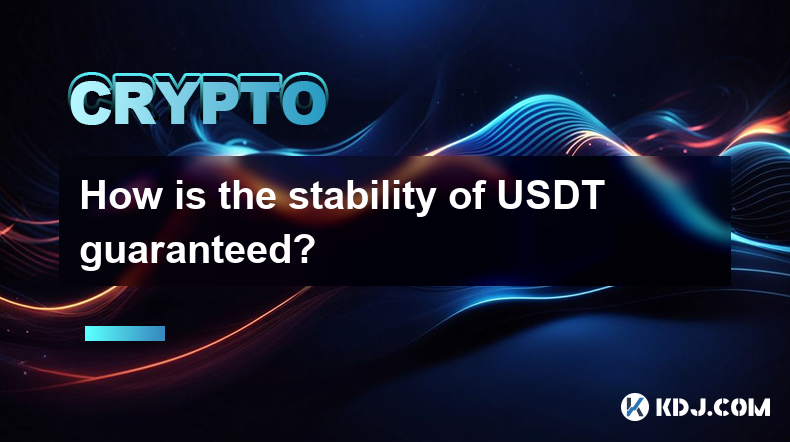
How is the stability of USDT guaranteed?
Apr 03,2025 at 06:00am
The stability of USDT, also known as Tether, is a critical aspect that underpins its role as a stablecoin in the cryptocurrency market. USDT is designed to maintain a 1:1 peg with the US dollar, which is achieved through a combination of mechanisms and practices. Understanding these elements is essential for anyone interested in the stability and reliab...

Is USDT's audit report credible?
Apr 02,2025 at 03:00pm
The credibility of USDT's audit report is a topic of significant interest and debate within the cryptocurrency community. USDT, or Tether, is a stablecoin that claims to be backed 1:1 by traditional fiat currencies, primarily the US dollar. The company behind USDT, Tether Limited, periodically releases audit reports to assure users of its solvency and t...

Is USDT's reserve transparent?
Apr 03,2025 at 01:50pm
USDT, also known as Tether, is a widely used stablecoin in the cryptocurrency market, designed to maintain a 1:1 peg with the US dollar. One of the most frequently asked questions about USDT is the transparency of its reserves. This article aims to delve into the details of USDT's reserve transparency, exploring the measures Tether Limited has taken to ...
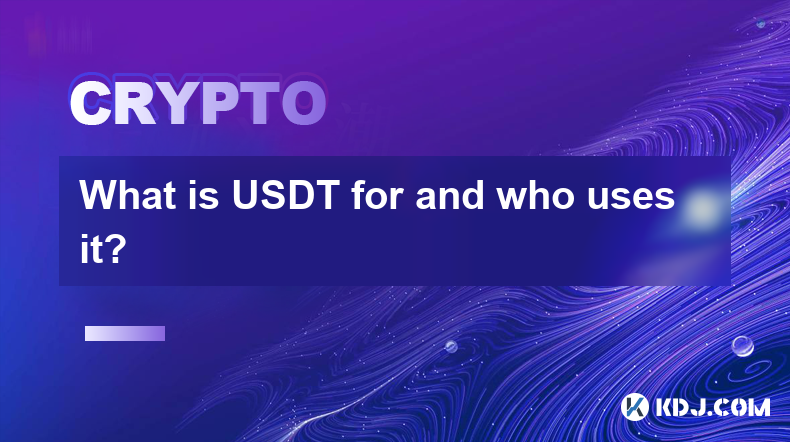
What is USDT for and who uses it?
Mar 31,2025 at 01:54pm
What does USDT do? Who can use it? USDT: The purpose of stablecoins and user groupsUSDT, full name Tether, is a stablecoin pegged to the US dollar. This means that 1 USDT should theoretically always be worth $1. Its main function is to provide a relatively stable store of value and trading medium in the cryptocurrency market, reducing the risks brought...
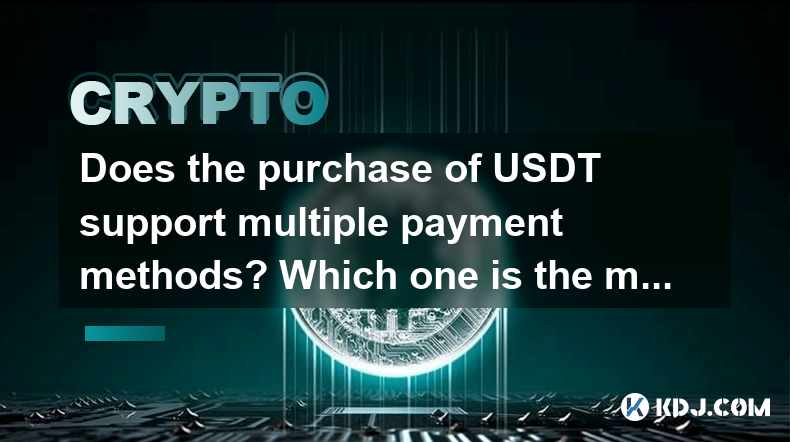
Does the purchase of USDT support multiple payment methods? Which one is the most cost-effective?
Mar 28,2025 at 04:56pm
Exploring USDT Purchase Options and CostsThe purchase of Tether (USDT), a popular stablecoin pegged to the US dollar, offers various payment methods, each with its own associated costs and benefits. The availability of specific methods depends heavily on the exchange or platform you choose. There's no single 'best' method, as cost-effectiveness is rela...
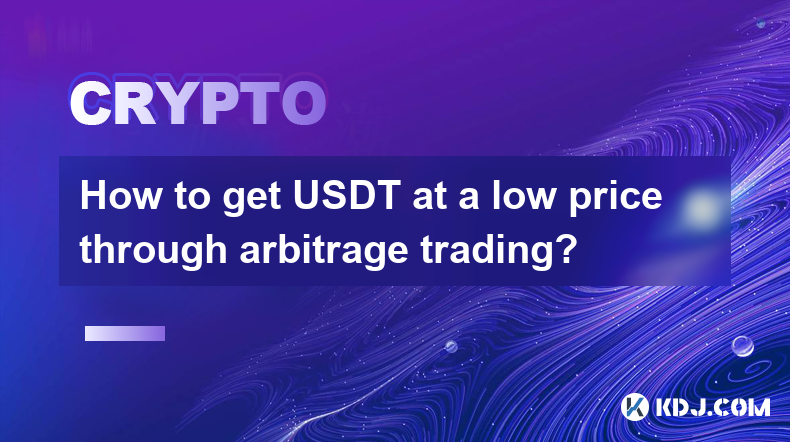
How to get USDT at a low price through arbitrage trading?
Mar 27,2025 at 08:14pm
Understanding Arbitrage Trading for USDTArbitrage trading exploits price discrepancies of the same asset across different exchanges. In the context of USDT (Tether), this means buying USDT on one exchange where it's cheaper and selling it on another where it's more expensive, profiting from the difference. This requires speed, efficiency, and access to...

How is the stability of USDT guaranteed?
Apr 03,2025 at 06:00am
The stability of USDT, also known as Tether, is a critical aspect that underpins its role as a stablecoin in the cryptocurrency market. USDT is designed to maintain a 1:1 peg with the US dollar, which is achieved through a combination of mechanisms and practices. Understanding these elements is essential for anyone interested in the stability and reliab...

Is USDT's audit report credible?
Apr 02,2025 at 03:00pm
The credibility of USDT's audit report is a topic of significant interest and debate within the cryptocurrency community. USDT, or Tether, is a stablecoin that claims to be backed 1:1 by traditional fiat currencies, primarily the US dollar. The company behind USDT, Tether Limited, periodically releases audit reports to assure users of its solvency and t...

Is USDT's reserve transparent?
Apr 03,2025 at 01:50pm
USDT, also known as Tether, is a widely used stablecoin in the cryptocurrency market, designed to maintain a 1:1 peg with the US dollar. One of the most frequently asked questions about USDT is the transparency of its reserves. This article aims to delve into the details of USDT's reserve transparency, exploring the measures Tether Limited has taken to ...

What is USDT for and who uses it?
Mar 31,2025 at 01:54pm
What does USDT do? Who can use it? USDT: The purpose of stablecoins and user groupsUSDT, full name Tether, is a stablecoin pegged to the US dollar. This means that 1 USDT should theoretically always be worth $1. Its main function is to provide a relatively stable store of value and trading medium in the cryptocurrency market, reducing the risks brought...

Does the purchase of USDT support multiple payment methods? Which one is the most cost-effective?
Mar 28,2025 at 04:56pm
Exploring USDT Purchase Options and CostsThe purchase of Tether (USDT), a popular stablecoin pegged to the US dollar, offers various payment methods, each with its own associated costs and benefits. The availability of specific methods depends heavily on the exchange or platform you choose. There's no single 'best' method, as cost-effectiveness is rela...

How to get USDT at a low price through arbitrage trading?
Mar 27,2025 at 08:14pm
Understanding Arbitrage Trading for USDTArbitrage trading exploits price discrepancies of the same asset across different exchanges. In the context of USDT (Tether), this means buying USDT on one exchange where it's cheaper and selling it on another where it's more expensive, profiting from the difference. This requires speed, efficiency, and access to...
See all articles























































































